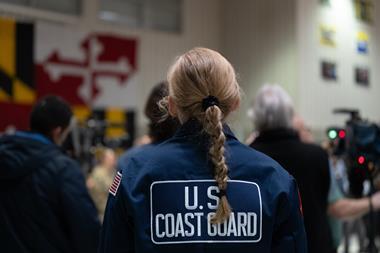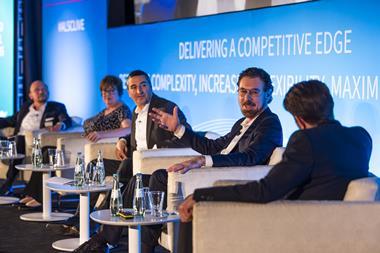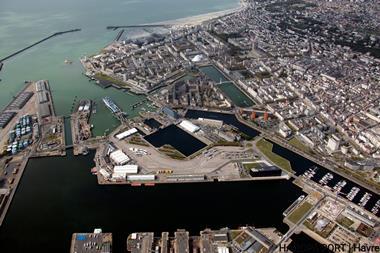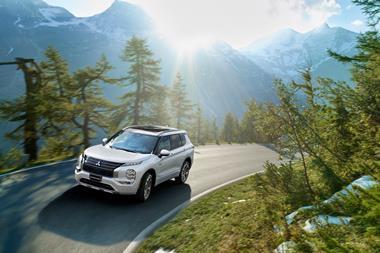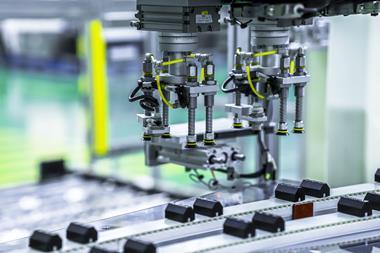With a stellar set of global carmakers in the country, favourable government policy, a competitive currency and growing markets at its doorstep, South Africa seems set to be a manufacturing and export powerhouse. Logistics could be the link that either makes or breaks the market’s potential.
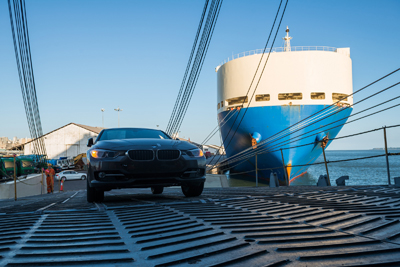
It is through this fast-growing, privately owned Mozambiquan port that BMW South Africa has just commenced shipping its 3 Series sedan vehicles to markets such as Japan, Singapore and Australia, using a ro-ro service operated by Japanese shipping line Mitsui, and splitting its South African export shipments between Maputo and the more traditional traditional port of Durban.
Established in 2007, the 48,000 square metre Maputo Car Terminal has more than 4,000 parking bays and a throughput capacity of 150,000 cars per year. Volumes were up 91% to 37,155 units in the six months to June compared to last year. Nissan is also using the port along with Durban in a similar dual-port export strategy to BMW’s.
Maputo is slightly closer to BMW’s Rosslyn, Pretoria car plant than Durban. But Durban also doesn’t involve a border crossing and an extra customs clearance. The port is linked to both BMW and Nissan’s assembly plants by a well-established rail link. In contrast, vehicles exported through Maputo must be transported by road, in both cases by logistics services provider Grindrod Freight Services – which also owns the Maputo Car Terminal in a joint venture with Höegh Autoliners.
“We have run trials to test the system and we are confident the export route is sound,” says Walter Grindrod, executive for group business development at Grindrod Freight Services. “Going forward, we expect two shipments per month to take place.”
- An industry in contradiction
- Historic issues
- Delivering to Africa
- Government policy
- Investment and cooperation
BMW is equally sanguine, with BMW South Africa logistics spokesperson Guy Kilfoil noting that the move to Maputo is cost neutral, and was made to mitigate the risk of unstable capacity at Durban, which is owned by South Africa’s state-run rail and logistics conglomerate, Transnet.
“Whilst it might be slightly more expensive to transport the vehicle by road to Maputo than by rail to Durban, the vastly lower costs of export at the Maputo harbour itself makes up for this,” says Kilfoil. “We have also devised a special wrapping for the vehicles which minimises road damage. All told, the costs of both routes are on a par, once all factors are calculated.”
Nissan is also relaxed about its two-port strategy of shipping through Maputo in parallel to Durban. “Maputo is cheaper, and as a privately run port, you have more control: there’s only one company to deal with,” points out Francois Retief, general manager for supply chain management at Nissan South Africa. “Using two ports gives us an ability to compare the two operations, and also gives us more negotiating power when it comes to rates. We just think it’s advisable to have a second option.”
Why leave South Africa just to leave South Africa?
It might seem strange that carmakers like BMW and Nissan would go to the trouble of establishing a second route to a port in a neighbouring country, just a short sail from Durban, to connect with a ship that might have actually just sailed there from Durban.
The reasons are both simple and complex. Simple, because there are some identifiable factors at work, upon which both carmakers and logistics providers broadly agree. But they’re complex because they lie in deep-rooted aspects of South Africa’s approach to industrial development policy and the role of the state in managing logistics infrastructure.
South Africa’s automotive industry is important to the country and its economy. As Dr Norman Lamprecht, executive manager of the country’s National Association of Automobile Manufacturers of South Africa (NAAMSA) points out in the 2013 edition of the Automotive Export Manual, an annual publication produced and compiled by South Africa’s Automotive Industry Export Council, the automotive industry makes up 7% of South Africa’s GDP, with vehicle production far outstripping domestic demand.
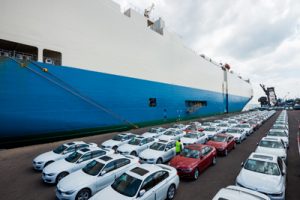
“The South African domestic market is generally not large enough to generate sufficient economies of scale for world‑class competitiveness and production,” says Lamprecht. “Consequently, exporting needs to be viewed as a necessary step towards international competitiveness. Failure to rise to the challenge by finding new markets and products could result in stagnation of exports.”
With global markets to play for, along with a vast – and largely untapped – African market also on its doorstep, plus a competitive currency to drive export sales, South Africa’s automotive industry would seem solidly placed to rise to that challenge.
The latest figures from NAAMSA point to employment at its highest for four years, strong growth in export vehicle sales, and relatively high levels of capacity utilisation in the country’s factories.
But the industry faces a number of problems. This summer saw a series of strikes by more than 30,000 workers over pay and redundancy terms that brought the sector to a standstill. Industrial action has been an issue across the entire South African economy.
Meanwhile, automotive growth has arguably been constrained by a logistics infrastructure incapable of handling volumes in an efficient and cost-effective manner. It’s here – as BMW’s move to Maputo highlights – that carmakers encounter difficulties in serving their export markets.
Historic congestion
In theory, that shouldn’t be the case. As NAAMSA’s Lamprecht points out, South Africa’s Transnet National Ports Authority is the largest port authority on the African continent, managing the country’s eight commercial ports of Richards Bay, Durban, East London, Port Elizabeth, Mossel Bay, Cape Town, Saldanha and Ngqura.
Yet the reality is that South Africa’s vehicle exporting ports and their associated infrastructure have a history of congestion, inefficiency, under-investment and port charges high enough, as BMW’s Kilfoil points out, to overturn the seeming cost disadvantage of lengthy road transport legs to Maputo.
“Competitiveness from a cost and productivity perspective is still an issue with South Africa’s ports,” says Rudolf Luttmann, director for car and ro-ro operations at Mitsui Bulk Shipping Europe, who also has responsibility for African trade. “Some of the problems have been addressed, and while the port of Durban has seen recent improvements, high port costs are still a problem.”
"While the port of Durban is well positioned for a shipping hub, we have found that limited vehicle storage capacity has forced us to seek alternatives for transhipments, exports and imports" - Rudolf Luttmann, Mitsui Bulk Shipping
Port congestion and the associated risks of delays are also matters of concern, he adds. “We expect ports to be able to meet the immediate demands of their customers in maintaining excellent services,” says Luttmann. “Our vessels are on a tight schedule, and must balance transit time reduction and bunker fuel consumption. So we cannot afford to idle the vessel, and wait for a berth. While the port of Durban is well positioned for a shipping hub, we have found that limited vehicle storage capacity has forced us to seek alternatives for transhipments, exports and imports.”
Such alternatives, of course, include Maputo, which Luttmann confesses is “developing quite positively for us”.
Quentin Hill, head of Southern Africa operations at shipping line Wallenius Wilhelmsen Logistics, adds that adverse weather conditions can be a problem. It’s common for vessels to be anchored offshore, waiting for conditions to improve before entering port. “We operate into the South African ports of Port Elizabeth, East London and Durban, and at certain seasonal times of the year any of these ports can be affected by challenging sea conditions usually brought on by the heavy and changeable wind conditions,” he says. “This can affect our vessels, either in terms of a vessel’s speed, or the safety aspect of entering and leaving port.”
Most of South Africa’s carmakers export to a broad range of markets – BMW to Europe and Asia, Mercedes-Benz to Europe, Asia and North America, and Ford globally to 148 different markets.
But thanks to a combination of infrastructure challenges and lower volumes, shipping to Africa itself can present challenges. In part, it’s an opportunity for container-based vehicle shipping.
“We’ve a weekly, structured schedule that goes to destinations not covered by the ro-ro carriers – West Africa, Liberia, the Seychelles and other islands,” says Dave Everett, shipping line Safmarine’s automotive specialist and key account manager for Africa. “Vehicles in containers are a good way of moving the containers themselves – which bring incoming parts for South Africa’s automakers – closer to their point of origin.”
“Shipping northbound, nothing can compete with containers,” agrees Richard Cox, chief executive of Kar-Tainer International, which provides special racks for containerised vehicles and manages a number of flows from South Africa: “It’s a no-brainer – the containers are going back anyway.”
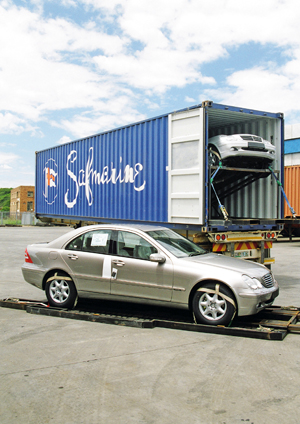
GM South Africa is wholly focused on supplying African markets, including the countries of the Southern African Development Community (Zimbabwe, Zambia, Mozambique, Malawi). The carmaker exports to several markets by sea, including the Seychelles, Mauritius, Madagascar, Ivory Coast, Senegal, Nigeria, Gabon, Angola, Ghana, Cape Verde, DR Congo, Ethiopia, Liberia and Cameroon, according to Celestin Ndhlovu.
“We prefer to ship vehicles on ro-ro services, although some ad hoc shipments go via containers,” he says. “But we dispatch vehicles to Southern African Development Community countries by road. We have looked at a short‑sea ro‑ro service to these countries, but have not yet made a business decision. We understand the concerns about the pressure placed on South Africa’s road system by freight traffic, but right now road transportation remains the most cost‑effective option from a business point of view.”
Rail links, too, are the cause of industry complaints, despite a large network. As NAAMSA’s Lamprecht points out, Spoornet, a division of Transnet – which declined to comment for this article – runs the largest rail service in Africa. Mostly electrified, the network extends into neighbouring countries.
For vehicle shipments, though, the problem is a shortage of rail wagons. Until recently, the wagon fleet’s newest additions were around 40 years old, says Nissan’s Retief. And with capacity in short supply, the priority had been short domestic services and shipping vehicles to ports for export, rather than extensive journeys into the north of the country to supply dealers there.
“South Africa has a huge infrastructure backlog, especially with respect to road transport,” says Lance Schultz, manager for supply chain and supplier development within South Africa’s Automotive Industry Development Centre. “But the country can’t use rail to its best advantage, due to a lack of infrastructure investment. The result is that shipments are forced onto the roads, which adds to the cost of doing business.”
Government incentives
None of these difficulties is new. As South Africa's automotive industry has evolve from a complete knockdown kit operation to one with a high percentage of locally manufactured content, high logistics costs and frequent bottlenecks have been recurring themes. But those issues are now more significant as South Africa's automotive industry undergoes a step change in output, largely as a result of government economic policies.
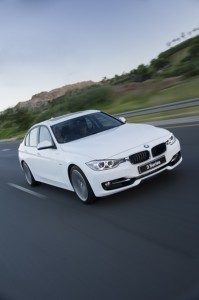
The transformation in scale is set to be significant: roughly speaking, it is expected to lead to a doubling in vehicle output to 1.2m units per year by 2020, with a significant proportion to be exported. And following a combination of cash grants, tax rebates and lower port charges, South Africa’s carmakers are responding.
BMW’s Kilfoil, for instance, directly credits the APDP with delivering a 60% growth in the carmaker’s local output. “We moved from a two‑shift operation producing 50,000 cars a year to a three‑shift operation producing upward of 80,000 units a year under this programme,” he notes. “However, the local market for these cars remains limited – around 12,000 units for the BMW 3 Series Sedan – which means that we’ve needed to fight for an increased share of BMW global exports, and from 2013 our plant is now responsible for 25% of global BMW 3 Series sedan production.”
The impact of APDP will place export facilities at the ports under further strain. BMW’s South African vehicle exports during 2013 are expected to more than double, growing from around 33,000 in 2012 to almost 70,000 vehicles per year, says Kilfoil. Toyota South Africa, for its part, will produce a record 160,000 vehicles during 2013, 55% of which will be exported, with 90% of those exports being shipped through Durban. Ford, meanwhile, anticipates sending about 40,000 units through Durban in 2013, a 19% increase on 2012’s 34,000 units, according to company spokesperson Rella Bernardes.
Senior management within South Africa’s automotive manufacturers have been weighing up their logistics options for handling the increased output and exports, and many are both making contingency plans as well as working more closely with Transnet.
BMW, for example, says that it still plans to expand its volume at Durban. About 20% of exports – or around 14,000 vehicles – per year will be exported through Maputo, while the total number of vehicles exported through Durban is expected to rise by almost 20,000 vehicles per year, an increase of more than 60%, according to the company.
Investing for growth
Despite this cooperation, industry and government alike are fully aware of the need to make sure that the capacities of South Africa’s ports and their associated logistics infrastructure grow in line with a doubling in vehicle volumes, of which most will be exported. Partly in response, Transnet has launched a ‘Market Demand Strategy’, with ports slated to receive 33 billion rand ($3.3 billion) in investment as part of an overall 300 billion rand programme. Rail, Transnet’s largest division, will see 151 billion rand invested, with several hundred new automotive rail wagons to be built, along with a fleet of Chinese-manufactured locomotives.
Close links, too, are being fostered between the automotive industry, the government and Transnet, in the shape of frequent bilateral discussions intended to better match port capacity to the industry’s requirements, over a 30-year horizon.
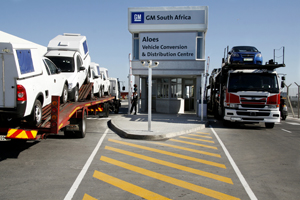
He sets as priorities the creation of more rail freight capacity; electronic document management; and the development of a short-sea ro-ro service to operate between the ports of Durban, Port Elizabeth and Cape Town.
This latter concept has been explored at length before, including by WWL, both in terms of shipments between the ports of Durban, Port Elizabeth and Cape Town, as well as to other, smaller ports, in an attempt to create a short-sea alternative for South African-manufactured vehicles and imported ones. Nothing came of it, says WWL’s Hill.
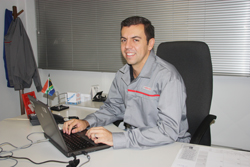
It’s these reasons that make a short-sea concept unattractive to many OEMs. Celestin Ndhlovu, logistics manager at GM South Africa, for instance, sees little chance of GM using such a service any time soon.
“From our Port Elizabeth facility, we ship both locally manufactured and imported vehicles to other cities in South Africa by road and rail, as the infrastructure and transport networks are in place to deliver an efficient service,” he notes. “By sea, the timelines are not as good as road or rail, and there are added costs in terms of port duties. But should the situation change in terms of the efficiency and cost-effectiveness of such a service, we would consider it.”
It's actually happening
Even if short sea doesn't materialise anytime soon, there do appear to be real signs of progress both in costs, collaboration and investment. Transnet, for example, appears to be finally getting the message about port charges. Compared to 2012, charges have been cut by 21.1% for vehicles exported by ro-ro, and 43.2% for those exported by container.
“Overall our logistics costs have been reduced by 30%, thanks to lower port charges, starting to use rail instead of road, and other improvements,” says Nissan South Africa’s Retief, who doubles as vice-chair of the NAAMSA Supply Chain Committee. “It’s all down to better collaboration between government and industry. In other words, it’s no longer a question of promises – it’s actually happening.”

















